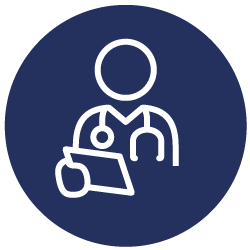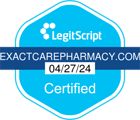
An Important Update
AdhereRx will no longer be providing pharmacy services, effective April 28, 2023. ExactCare Pharmacy is now the pharmacy provider for AdhereRx patients.
ExactCare Pharmacy provides the same types of services patients have enjoyed with AdhereRx, including packaging, monthly delivery, coordination with prescribers and more. ExactCare also partners with prescribers and healthcare organizations to provide support to patients and improve healthcare outcomes.
Please contact ExactCare Pharmacy if you are:
- An AdhereRx patient in need of support
- Interested in pharmacy service for yourself or someone else
- A healthcare provider interested in referring a patient for service
- A prescriber trying to get in touch regarding a prescription
- A healthcare organization interested in partnering
Thank you for your trust in AdhereRx. We have enjoyed working with you.


